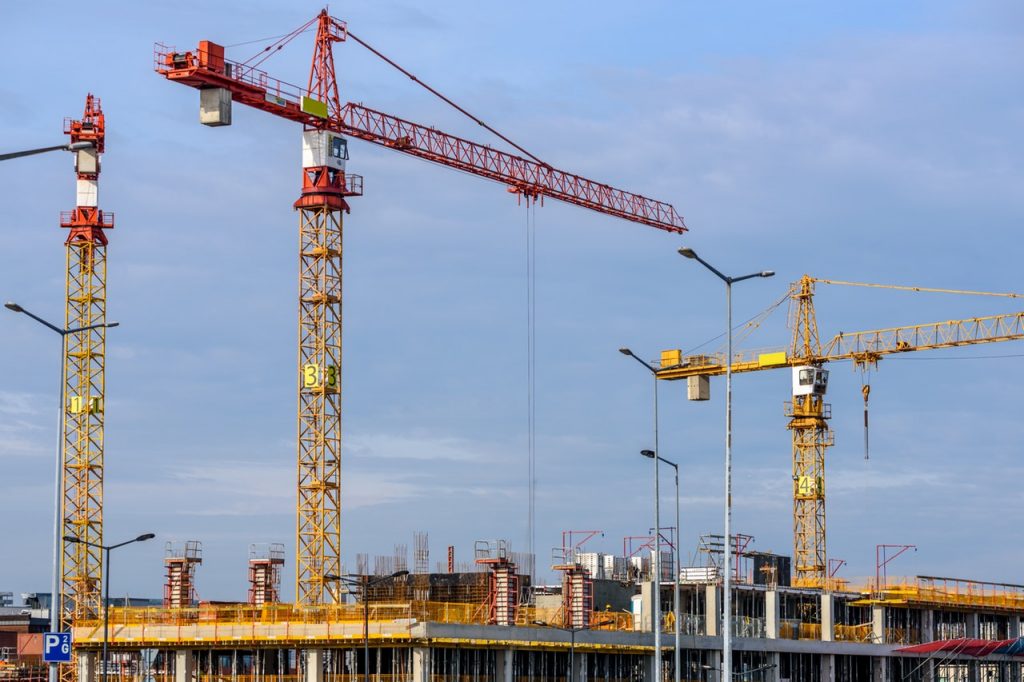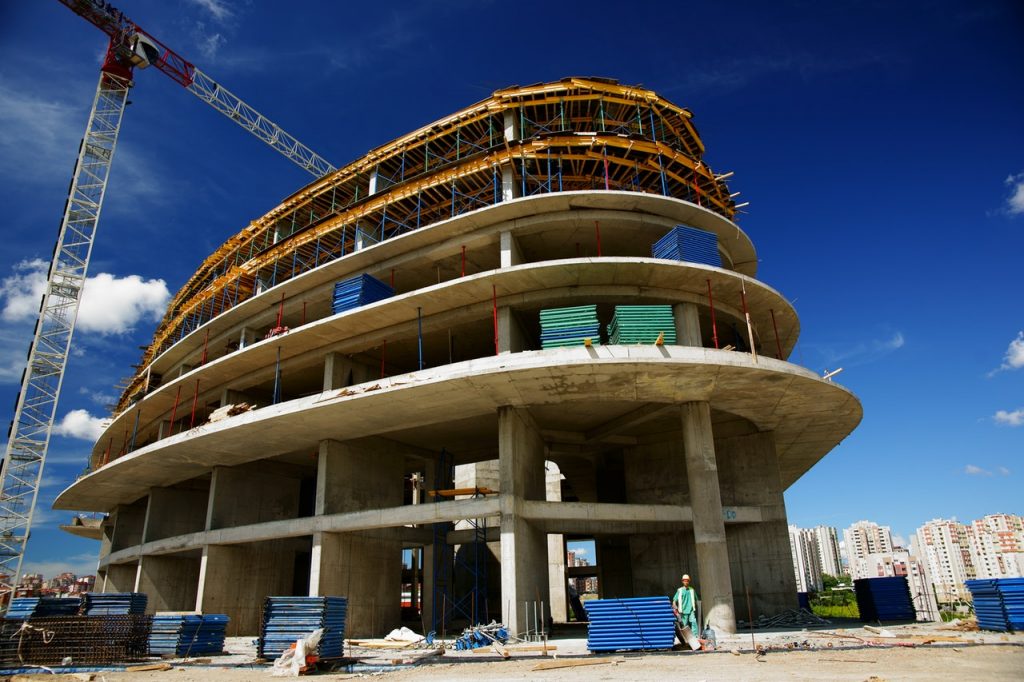
A tower crane is a type of machine which can be used to lift or lower the heavy things and materials such as steel beams, concrete etc. It moves things horizontally. On average unsupported cranes can go a height of 100 meters. Cranes as tall as Burj Khalifa, the tallest building in the world were also made and used. There are much larger cranes available that are dependent on the building to a great extent for their stability. The assembling is done either through self-climbing or mobile cranes. Tower cranes stay at one place and ease the process of transportation of goods.
Tower cranes are well designed; several experiments are completed prior for the lifting of heavyweights. Approximately an average tower crane can lift a maximum of 18 metric tons. Usually, a tower crane bolted with a massive concrete mast can lift around 40000 pounds. Cranes are extensively used in the construction industry for not only lifting goods of varying weights but also rigging. Crane hire companies are being used a lot as there are always new developments happening such as an apartment or hotel complex. Time and effort consumed manually are much higher as compared to when tower cranes are used.

Working of Tower Cranes
Tower cranes are complex and powerful machines. It is always advisable that an operator with formal training should only operate the crane to avoid dangerous hazards.
- Generally, a tower crane is equipped with hoists, a rope or chains, pulleys and windings. A substantial base must support mast, a vertical and tall part of the crane. If a broad and robust base does not help the mast, it is difficult to lift heavy weights to greater heights.
- At the top of the mast, there is a sewing unit — this aids in the rotation of a tower crane. The operator detaches the group from the mast.
- The jib is located above the slewing unit. It is long and horizontal in structure. It is also known as working arm. To carry the load effectively, a jib then uses the trolley for support. The concerned person usually put a weight on the jib, so that counter-wise weight can be balanced. The crew lifts the mast section through the gap of the climbing frame using the crane.
- The tower crane might face balance issues while picking the load with the working arm. This is mostly because the capacity is not sufficiently large to balance the crane. To curb this problem, there is a load calculator in the cranes. This measures the load at particular angles and weights. It also called the chart which shows the maximum amount the crane can lift.
- The operator cab is comprised of electronic controls which can be used to operate the crane. The electronic controls consist of commands to handle the drum and motor as well as authority to drive the unit.
In spite of various scientific methods of today’s advanced world, the tower crane is used for multiplying force to lift heavy objects. The actual power required is decreased by using multiple pulleys. The simple scientific principle of mechanical advantage is behind the functioning of the tower crane. Fulcrum is used to multiply force in balance style cranes.
Pulleys are also utilised for lifting cumbersome objects with lesser force. Pulley is used in the jib style crane. Some cranes especially the latest models contain a hydraulic cylinder which powers the jib or balance which facilitate the lifting the objects.
Once the work is over, other tower cranes or recovery is used to dismantle the tower crane. After pulling it apart, it is shifted to the ground using goods or passenger lift.
It is always advisable that only formally trained operator handle the tower cranes. Their experience mitigates the risk of accidents at the construction sites.












